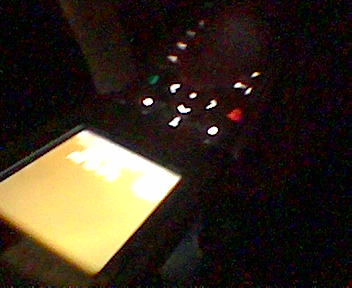I recently caught up with my brother. He is a writer and newspaper sub-editor. We were sharing a few beers and a yarn as you do, and the conversation got around to
TISM. TISM, or This Is Serious Mum were a band who performed around Melbourne and Australia from about 1982 to 2011. Sadly I only ever got to see them once at the Corner Hotel in Richmond. They have an extensive footprint on
youtube. As a consequence once home later that night I loaded up a bunch of videos on YouTube, and also grabbed the
book they had published. I grabbed it as I dashed out the door to sit the gallery this afternoon again. Reading the introduction was a great laugh. Last night my brother and I wondered. Who is writing and playing such rebellious and irreverent music these days? Neither of us could answer. As an example of their ethos attitude and barbs here’s a song of theirs that resonates. It’s called ‘The Back Upon Which Jezza Jumped”. It’s more about the ‘Average Joe' than footy, which is why I like it.
The 1970 Grand Final. One the greatest marks ever in the
History of VFL football is taken by Mr. Alex Jesaulenko.
And this is a song about the man he took it over,
Mr. Graeme 'Jerker' Jenkins."
The back upon which Jezza jumped and rode into the ground,
The humiliated vertebrae that mighty mark crushed down,
The pathetic platform from which Jezza leapt into the sky,
That ladder to immortality is finally laid to down to die.
Is Jerker... is Jerker, Jerker dead?
Is Jerker... is Jerker, Jerker dead?
Yes, Graham "Jerker" Jenkins, the man that stood his ground,
That took the pain that gave others fame is six foot underground.
Giant jolly Jerker Jenkins, Jesaulenko's dupe.
All he got out of that magic mark was a tendency to stoop.
Did he hear the thundering footsteps on that fateful day,
As he looked up at that Sherrin, did he know he'd have no say,
As Jezza jumped to fame and glory with one almighty leap
And he was left to be forgotten in a crumpled heap.
Is Jerker... is Jerker, Jerker dead?
Is Jerker... is Jerker, Jerker dead?
And so all you men with small ability and mediocre skill,
All those of you who in the race of life are left standing still,
All those who must always know others who are unquestionably better,
The second class, the also-ran, the unsucessful go-getter
The minor-leaguers, the average markers, the consistent second-raters,
The stay-at-homers, the timid loners, the habitual masturbators,
The ugly girls, the amputees, the screaming mongoloids,
Is Jerker... is Jerker, Jerker dead?
The senile old, the deformed young, the bladders that unwillingly void, the cancer ridden,
Is Jerker... is Jerker, Jerker dead?
The Aids victim, the plastic surgery disaster, the fake bowel,
Is Jerker... is Jerker, Jerker dead?
The anguished howl as the psychopath shafts ya, the violated, the child rapist,
Is Jerker... is Jerker, Jerker dead?
The jerkoff artists, The intensely hated, the disaster fated, the involuntary farters.
Is Jerker... is Jerker, Jerker dead?
All of you huge race of men, with mind or body dismembered,
Is Jerker... is Jerker, Jerker dead?
Never forget the name of the man who will never be remembered
Is Jerker... is Jerker, Jerker dead?
And beware all of you with hopes of happiness you pathetically nurture,
Is Jerker... is Jerker, Jerker dead?
Lest you forget the back upon which Jezza jumped
Is Jerker... is Jerker, Jerker dead?
The giant Graeme 'Jerker'.
Is Jerker... is Jerker, Jerker dead?
Is Jerker... is Jerker, Jerker dead?
Is Jerker... is Jerker, Jerker dead?
Is Jerker...
















